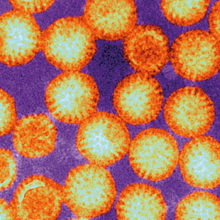Editorial
Issue: Microbiology in Popular Culture
07 November 2017 article

Welcome to the November edition of Microbiology Today and one in which we discuss ‘Microbiology in Popular Culture’. Now, I’m sure everyone reading this can think of a favourite book, TV show or film. I’m particularly partial to a good murder mystery, which, if on TV, is all neatly wrapped up in two hours; but how often do we consider the science that has gone into making the programme? In this edition our authors provide some insight into how popular culture portrays microbiology, whether it is in a carefully investigated crime scene or in a sci-fi classic portraying alien life on a planet far, far away.
To start us off, Sandy Starr and Jennifer Willows look at how the many works of fiction that touch on gene editing might influence opinion on this subject. Whether considering old classics like Frankenstein or futuristic worlds with controlled populations, these fictions can bring genome editing to the forefront of public discussion. The topic of genome editing is a complex, fast-moving field of science that can raise concern about the ethical implications among the general population. Touching on their research into public understanding of this topic, Sandy and Jennifer share their findings about the kind of information people want to be provided with when having to make decisions about genome editing.
We then delve into crime dramas, particularly those showing the scene of a crime such as CSI. This example of an increasingly popular TV format showcases microbiology on screen, often depicting perfect sample matches to criminals and rapidly solved cases. How important is it for people to understand that part of what they are seeing in these shows is pure fiction? The writers of our second article, Lorna Dawson and Chris Gannicliffe, highlight the realities of forensic science, the range of complementary forensic services needed, and where the science ends and the fiction begins.
Following on from this, Andrew Burns and David Bhella address disease outbreaks and how the film version of events, while based on real microbiology, can rapidly diverge into something completely unexpected. Focusing on likely candidates of viral origin, they reflect on various outbreak films and suggest the possible inspiration for the contagions in question. This piece highlights how terrifying film scenarios can be rooted in very familiar science before they perhaps become a little more fantastical.
Our fourth piece takes a look at fungal disease and how it fits into popular culture. While fungal agents have been used as the causal agent of both a cannibalistic human race and zombie apocalypses for computer games, books and TV, it is perhaps less likely to considered to be a serious problem than its bacterial or viral counterparts. Lewis White describes how the fictional portrayal of fungal disease in mainstream media helps raise the profile of fungal disease, which increasingly shows resistance to treatments.
In the fifth piece by Arwyn Edwards, we leave Earth behind and look at the potential for reproducing Earth-like conditions on previously lifeless planets. In fiction, terraforming whole planets can be rapidly successful, resulting in new ecosystems that can support human life. While this rapid transformation is currently unrealistic, could it hint at something that will eventually be possible? Some of the planets depicted in sci-fi programmes mirror planets in our solar system. Could these be potential candidates for supporting life off Earth, even if that life might initially be microbial?
Our Comment piece has been written by Amy Chambers, focusing on the use of science in film, how films can influence public perception and their expectations of what science can deliver. Could it be that films which research the facts and utilise expert scientific advisors make for more entertaining films? Amy outlines how interdisciplinary collaborations between film-makers and scientific advisors can help deliver a better package for everyone watching at home or in the cinema.
Rowena Jenkins
Editor
[email protected]
Image: Colour-enhanced transmission electron micrograph of simian rotavirus SA11, negatively stained with phosphotungstic acid. ASM/Science Source/Science Photo Library.
